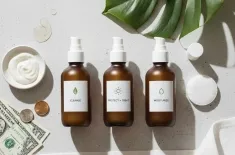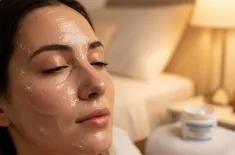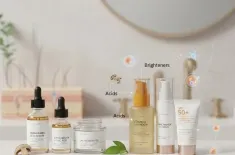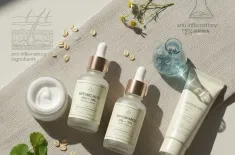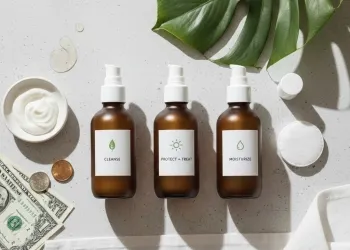Discover Retinaldehyde, the gentle yet potent Vitamin A derivative.
For decades, Vitamin A derivatives have reigned supreme as the gold standard in anti-aging and acne-fighting skincare. Collectively known as retinoids, these powerful compounds are celebrated for their ability to accelerate cell turnover, boost collagen production, and significantly improve the appearance of fine lines, wrinkles, dark spots, and texture. However, the transformative power of traditional retinoids, most notably retinol, has always come with a well-known caveat: the potential for irritation, redness, dryness, and flaking—often called the "retinization" phase.
Today, a new generation of gentle retinoids is emerging, promising the potent benefits of Vitamin A without the common side effects. Leading this charge is Retinaldehyde, or Retinal, a powerful intermediate form of Vitamin A that is quickly becoming the preferred choice for those with sensitive skin or anyone seeking a more efficient, yet significantly less irritating, path to skin renewal.
The Vitamin A Conversion Pathway: Retinaldehyde vs Retinol
To truly understand why Retinaldehyde is the future of gentler yet more potent Vitamin A skincare, we must first look at the body's natural conversion pathway. All cosmetic vitamin A derivatives must ultimately be converted into retinoic acid (also known as Tretinoin, the prescription-strength form) to become biologically active and exert their beneficial effects on skin cells.
The complete conversion chain looks like this:
$$ \text{Retinyl Esters} \rightarrow \text{Retinol} \rightarrow \text{Retinaldehyde} \rightarrow \text{Retinoic Acid (Active)} $$
Retinol: The Two-Step Journey
Retinol is the most widely recognized over-the-counter (OTC) retinoid. When you apply a retinol product, the ingredient is two conversion steps away from its active form:
- Retinol is converted to Retinaldehyde (Retinal).
- Retinaldehyde is converted to Retinoic Acid.
This two-step process means that retinol is relatively mild and releases the active retinoic acid more slowly. While this can make it a good starting point for some, it also means it is less potent and takes longer to deliver visible results. Moreover, the conversion process itself can sometimes lead to an initial inflammatory response, causing the characteristic irritation.
Retinaldehyde (Retinal): The One-Step Shortcut
Retinaldehyde vs Retinol—the key difference lies in its position on this conversion ladder. Retinaldehyde (Retinal) bypasses the first, rate-limiting conversion step. It is only one conversion step away from the active retinoic acid.
$$ \text{Retinaldehyde} \rightarrow \text{Retinoic Acid (Active)} $$
This makes Retinaldehyde significantly more potent and faster-acting than traditional retinol. Studies suggest that Retinaldehyde is up to 11 times more potent than retinol.
But here is the breakthrough: despite its superior potency and faster action, Retinaldehyde is often associated with less irritation than retinol.
The Science Behind Less Irritation and Higher Potency
The simultaneous promise of greater efficacy and reduced side effects is what truly sets Retinaldehyde apart as a gentle retinoid. This seemingly contradictory performance is explained by the sophisticated way Retinaldehyde interacts with the skin.
The Conversion Control Mechanism
The mechanism that makes Retinaldehyde a better-tolerated, gentle retinoid is tied to its proximity to retinoic acid.
- Higher Bioavailability, Controlled Action: Because Retinaldehyde is only one step away, less of the ingredient needs to be applied to achieve the desired concentration of active retinoic acid in the skin. Crucially, the final conversion step from retinaldehyde to retinoic acid happens *on demand* within the skin cells that are ready to utilize it.
- Storage Mechanism: A portion of the Retinaldehyde is also converted into retinyl esters, which act as a storage form of Vitamin A within the skin. This controlled conversion and storage system helps provide a gradual, progressive renewal effect rather than an overwhelming "shock" to the skin, which is often what causes the redness and peeling associated with stronger retinoids. This contributes to the feeling of less irritation.
The Advantage of Potency and Speed
The high potency of Retinaldehyde means users can see significant improvements in a shorter timeframe compared to retinol, but without the harshness of prescription retinoic acid. This makes it an ideal ingredient for:
- Rapid Results: Fine lines, wrinkles, and sun damage are visibly improved faster.
- Acne-Fighting Power: Retinaldehyde possesses direct antibacterial properties, which is a unique advantage over retinol. It actively targets *Propionibacterium acnes* bacteria, making it an exceptional option for blemish-prone skin, in addition to its cell-turnover benefits that help unclog pores and reduce scarring.
Formulating the New Generation: Stability and Delivery
The rise of the new generation of gentle retinoids is not solely due to the raw ingredient but also the advancements in formulation technology. Retinaldehyde is inherently less stable than retinol, meaning it degrades more easily when exposed to light or air. Modern skincare brands overcome this challenge using advanced delivery systems, most notably a slow release formula.
Encapsulation Technology
To ensure the ingredient remains potent and is delivered precisely where it's needed in a controlled manner, brands often use:
- Encapsulation: Retinaldehyde is encased in protective, microscopic spheres (often liposomes or crystal structures). This process shields the molecule from degradation and ensures a slow release formula deep into the skin's layers.
- Targeted Delivery: The encapsulation also facilitates a progressive renewal effect, as the retinoid is released slowly over several hours, minimizing the sudden burst of activity that often leads to irritation. This is a critical factor in achieving less irritation while maintaining high efficacy.
Integrating Gentle Retinoids into Your Routine
Switching to a gentle retinoid like Retinaldehyde can dramatically improve your skin's tolerance for Vitamin A while accelerating your results.
Best Practices for Optimal Results and Less Irritation
- Start Slow: Even with a gentle retinoid, it's crucial to allow your skin to acclimatize. Begin by using the product just two or three nights a week. Slowly increase frequency as your skin builds tolerance. This technique encourages progressive renewal.
- Use the "Sandwich" Method: To minimize the risk of dryness and irritation, apply a layer of moisturizer *before* your retinaldehyde serum, and then another layer of moisturizer *after* the serum.
- Prioritize Sun Protection: Retinoids of all types increase photosensitivity. A broad-spectrum SPF 30 or higher must be applied every single morning, regardless of the weather. No skincare ingredient is worth the potential sun damage.
- Pair Wisely: Focus on using hydrating and barrier-supporting ingredients like hyaluronic acid, ceramides, and niacinamide on retinoid nights. Temporarily avoid using other potentially irritating actives (like strong AHAs, BHAs, or benzoyl peroxide) at the same time until your skin is fully adjusted.

